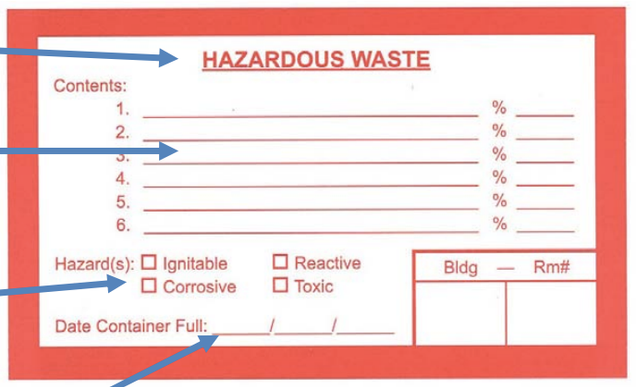Chemicals and their containers.
Chemical waste storage containers are usually found in the fume hood.
Mixing of liquid waste may generate toxic or corrosive aerosols.
Keep waste containers closed except when adding waste.
We will be cited for this when we are inspected.
Use waste containers with leak proof screw on caps so contents can t leak if a container tips over.
Wear the appropriate personal protective equipment ppe for this process lab coat nitrile gloves and safety glasses and conduct all work within a chemical fume hood fill a 1 gallon 1g mayo container halfway with di water and place it in the fume hood.
Gas cylinders must be securely strapped to a permanent structure wall lab bench etc.
This of course defeats the purpose of the hood which is to protect you from harmful chemicals and their vapors.
The hood works by capturing air borne chemicals and exhausting them to the atmosphere.
Raising the sash reduces this capture velocity allowing vapors to spill over the sill into the room air.
Items stored in the hood interfere with the flow of the fume hood.
Storage shelves cabinets ensure chemical storage shelves are securely fastened to the wall and have lips or other suitable methods to prevent bottles from falling in the event of an earthquake.
The container must be in secondary containment i e.
Flammable waste should be stored within a flammable safety cabinet and must count towards the fire code storage limits for the lab.
Label the new container.
Fume hoods should not be used as general storage areas for chemicals.
Inspect stored chemicals often for expiration deterioration and chemical integrity.
Ecih fume hood q a 11 08 pdf 2 of 8 boger rev.
Storing containers with open tops in a hood is viewed as treatment of hazardous waste by epa.
When they are not in use they should be capped off.
You can place dry ice in a hood and see how well it actually works.
Chemical safety staff may ask you to assist them in removing waste from fume hoods both for safety reasons and to avoid disturbing your experiments or processes.
Avoid or minimize the storage of waste materials inside a chemical fume hood to preserve space for working safely and to allow for proper airflow within the fume hood.
If the sash is all the.
Do not store waste containers on the floor.
Large plastic bin or bucket.
If necessary transfer waste material to a container that can be securely closed.
Corks parafilm and beakers are not acceptable.
Perform liquid chemical waste management in a fume hood.
Fume hoods may be used temporarily to store small quantities of waste materials but should not serve as designated waste storage areas.
The airflow they provide is greatly in excess of that needed for storage of closed containers of even the most toxic of volatile materials.

